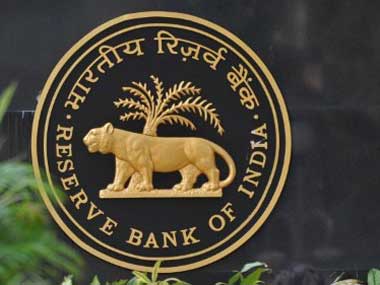The Reserve Bank of India will cut the CRR (cash reserve ratio) by 50 basis points in its March policy review, but the cut will not help bring down the cost of funds for banks.
The reason the RBI will cut CRR is that system liquidity, as measured by bids for repos in the LAF (Liquidity Adjustment Facility) auction, has become extremely tight. Repo bids touched Rs 1,80,000 crore on 28 February, an all-time high.
[caption id=“attachment_229056” align=“alignleft” width=“380” caption=“A 50 basis-point cut in CRR can add around Rs 32,000 crore to the system, which will not help much when liquidity is short by over Rs 2,00,000 crore. AFP”]
 [/caption]
[/caption]
System liquidity has tightened by around Rs 40,000 crore since the end of January and will get tighter heading into March. Advance tax payments around 15 March and financial year-end pressure for money will take up bids for repo to well over Rs 2,00,000 crore.
The RBI will cut CRR to improve system liquidity but it will not really help in easing liquidity by much. A 50 basis-point cut in CRR can add around Rs 32,000 crore to the system, which will not help much when liquidity is short by over Rs 2,00,000 crore. One-year CD (certificate of deposit) rates have gone up by 40 basis points to 10.2 percent over the past month and the rates will not come off by much on a CRR cut.
Excess SLR being used as liquidity tool
Government bond holding of banks are equivalent to around 29 percent of their NDTL (net demand and time liabilities). The statutory limit (SLR, or statutory liquidity ratio) for banks to hold government bonds is 24 percent of NDTL. Banks effectively have excess government bonds of up to 5 percent that they can use to borrow funds from the RBI. Five percent of excess SLR amounts to around Rs 2,90,000 crore (on a deposit base of around Rs 58 lakh crore). Banks are using these excess bond holdings to access funds from the RBI.
The excess SLR is helping RBI overcome the high liquidity deficit in the system. It is also keeping overnight rates steady at around repo rates of 8.5 percent. Hence, only a cut in the repo rate can bring down the cost of funds for banks.
Liquidity tight despite positive factors
Liquidity has tightened despite the release of Rs 32,000 crore into the system through a CRR cut of 50 basis points by the RBI in January. The central bank has also purchased bonds worth Rs 30,000 crores in through OMO (open market operations) bond purchase auctions. Even after taking the CRR cut and RBI bond purchases into account, liquidity has tightened by Rs 1,00,000 crore in February 2012.
In fact, other sources of liquidity tightness, such as dollar sales by the RBI, a government surplus and currency in circulation, have not acted up to cause this liquidity tightness. The rupee has been on an uptrend in February, gaining close to 1 percent over the month on the back of FII (foreign institutional investor) portfolio flows that crossed $4.5 billion since the start of this year and RBI intervention have not been noticed. The RBI had sold dollars heavily in December 2011 to stem the rupee’s slide. The central bank sold $7.8 billion in December to protect the local currency, which had lost close to 15 percent against the dollar in the second half of calendar 2011. The RBI’s dollar sales did impact liquidity but it was factored in the liquidity figures in January.
The government has not been running a surplus balance with the RBI, while the currency in circulation has gone by Rs 20,000 crore in February. The rise in currency in circulation impacts system liquidity adversely as implies a leakage of money from the system.
Another factor affecting liquidity could be higher oil imports, which could lead to higher demand for dollars by oil importers. Oil prices have jumped by more than 13 percent in 2012 and the higher value of imports leads to increased demand for dollar to pay for the imports.
However, part of the excess demand for dollars for oil imports should have been compensated by the portfolio flows of over more than $6 billion. Higher oil imports can only partly explain the liquidity tightness. There are still many grey areas on the liquidity front that are yet to be explained.
Arjun Parthasarathy is the editor of www.investorsareidiots.com , a web site for investors.
Arjun Parthasarathy has spent 20 years in the financial markets, having worked with Indian and multinational organisations. His last job was as head of fixed income at a mutual fund. An MBA from the University of Hull, he has managed portfolios independently and is currently the editor of www.investorsareidiots.com </a>. The website is for investors who want to invest in the right financial products at the right time.
)